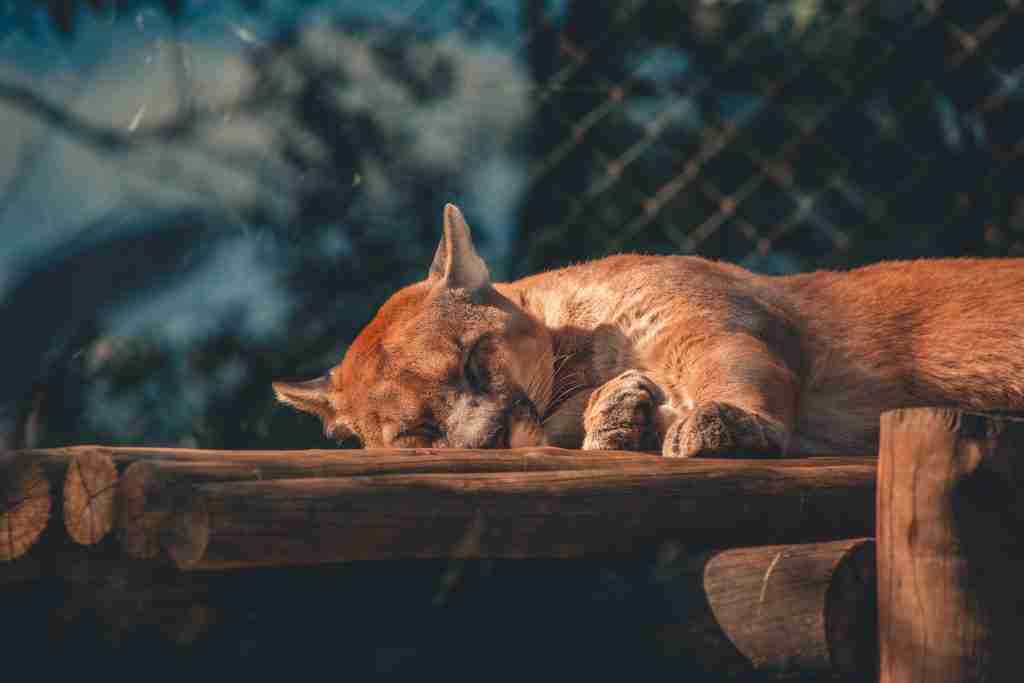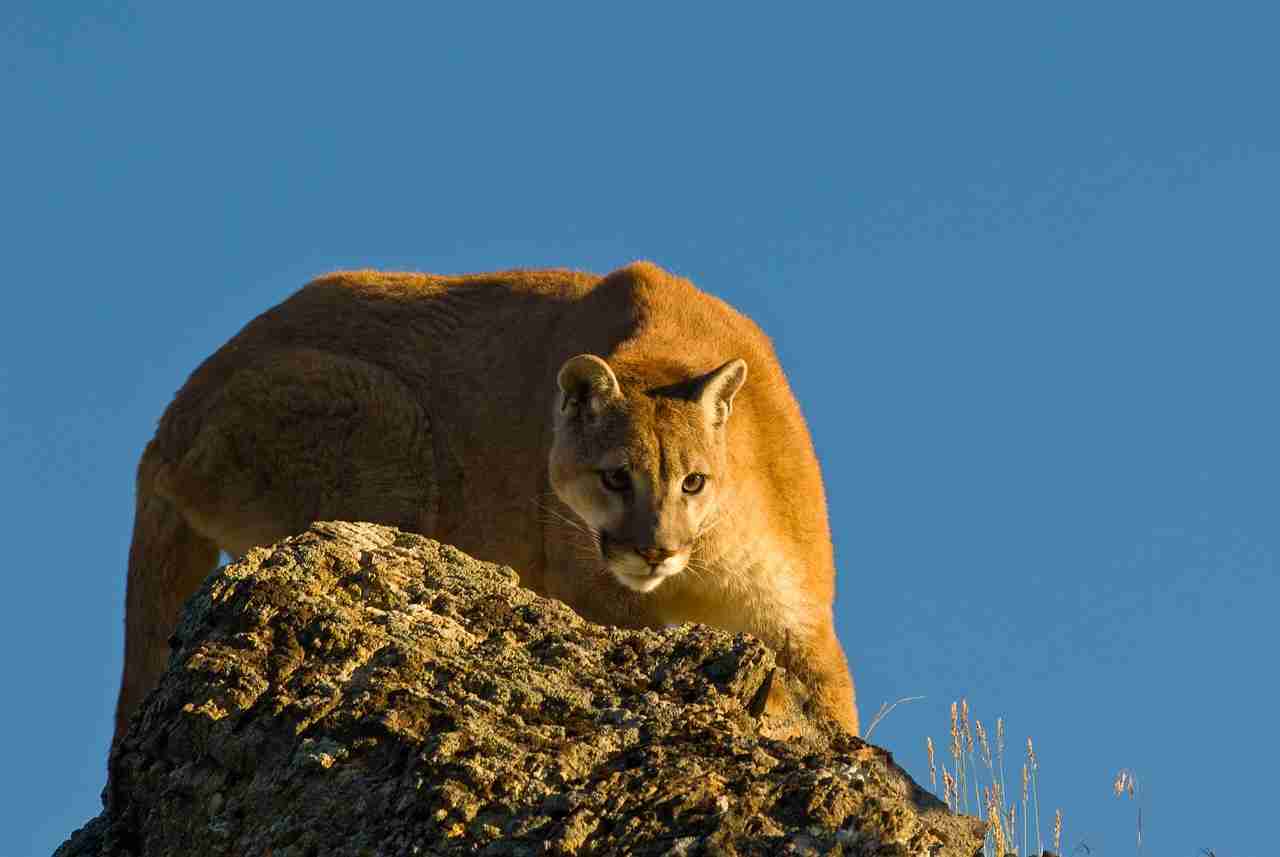Fun Facts About Cougar- America’s Largest Cat
1. Cougars are carnivores and primarily eat deer, but will also eat smaller animals like rabbits and rodents.
Cougars are apex predators that primarily feed on deer. Their diet can also include smaller animals like rabbits and rodents, as well as other mammals such as elk, moose, and bighorn sheep.
Cougars are opportunistic hunters and will take advantage of any prey they can catch, including domestic animals like livestock and pets.
2. Cougars are skilled hunters and have a success rate of over 50%.
Cougars are skilled hunters with a success rate of over 50%. They rely on their stealth, agility, and powerful legs to catch their prey.
Cougars often stalk their prey from a distance and then pounce on them, delivering a powerful bite to the neck or throat to quickly dispatch them.
3. Cougars are crepuscular, meaning they are most active during dawn and dusk.
Cougars are crepuscular animals, which means they are most active during the twilight hours of dawn and dusk.
They are generally nocturnal animals that hunt and move around during the night, but they can also be active during the day.
4. Cougars are known to have a wide vocal range, including growls, hisses, and screams.
Cougars have a wide vocal range and can make a variety of sounds including growls, hisses, purrs, and screams.
They use vocalizations to communicate with each other and to establish their territory.
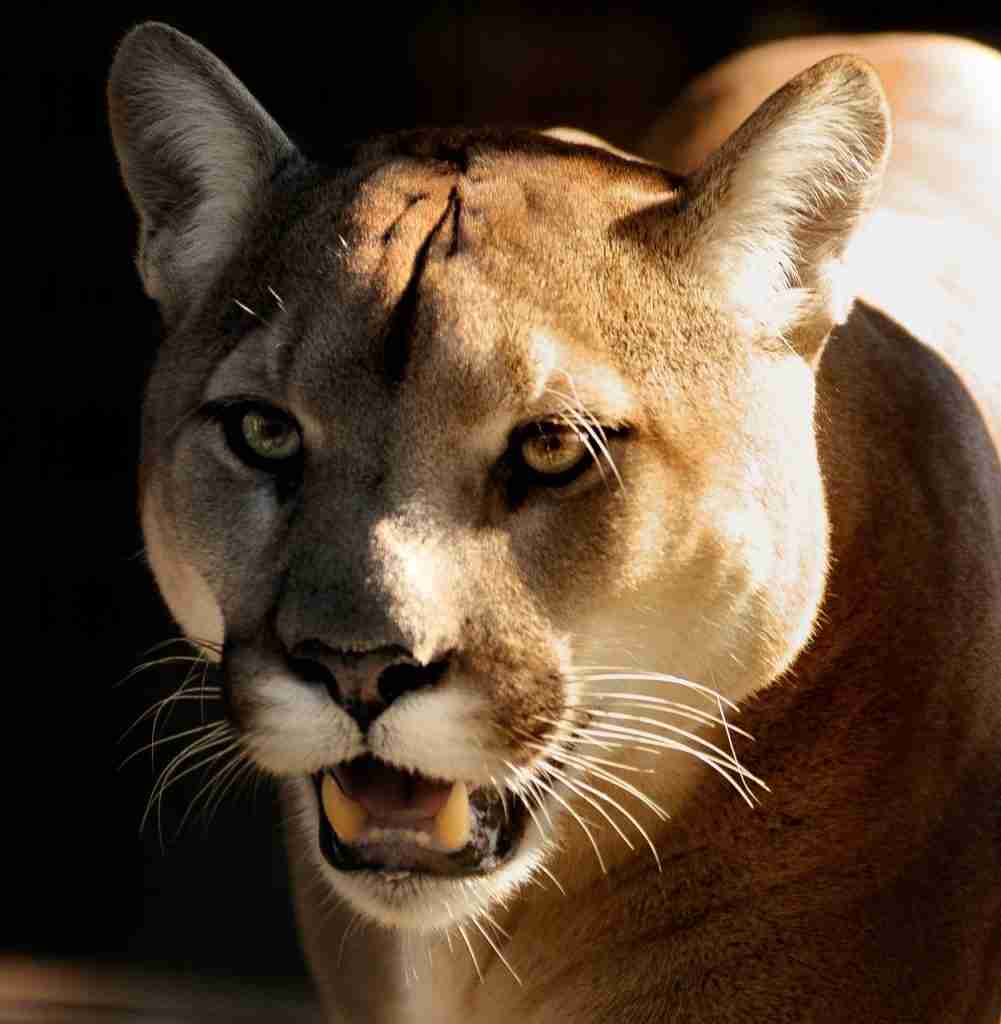
5. Cougars are territorial and will mark their territory with scent.
Cougars are territorial animals that will mark their territory with scent.
They use their urine and feces to mark their territory and communicate with other cougars in the area.
6. Cougars can live up to 12 years in the wild and up to 20 years in captivity.
Cougars can live up to 12 years in the wild and up to 20 years in captivity.
Their lifespan depends on various factors, including their access to food and water, the prevalence of diseases and injuries, and the level of human interaction.
7. Cougars are not endangered, but their populations are declining due to habitat loss and hunting.
Cougars are not currently listed as an endangered species, but their populations are declining due to habitat loss, hunting, and conflicts with humans.
As human populations expand into cougar territory, there are more interactions between humans and cougars, which can lead to negative outcomes for both humans and cougars.
8. Cougars are strong swimmers and can cross rivers and lakes.
Cougars are strong swimmers and can cross rivers and lakes to hunt or travel. They are also capable of climbing trees to avoid predators or to rest.
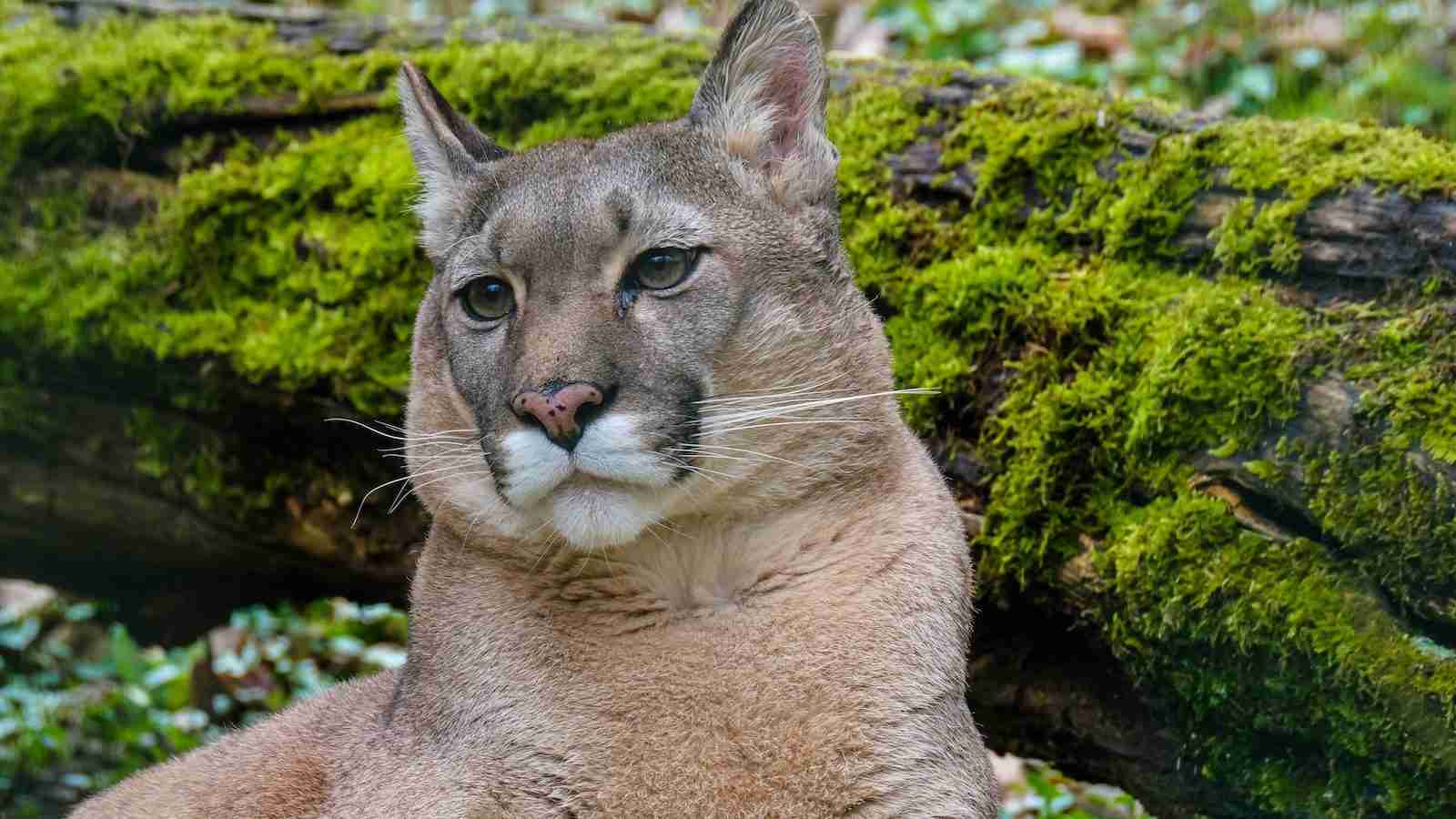
9. Cougar cubs are born with spots on their fur, which disappear as they get older.
Cougars cubs are born with spots on their fur that help them blend into their surroundings and avoid predators.
These spots typically disappear as the cubs get older and their fur becomes more solid in color.
10. Cougars are considered a symbol of strength and agility in many Native American cultures.
Cougars are considered a symbol of strength and agility in many Native American cultures.
They are often revered for their hunting skills and their ability to move stealthily through their surroundings.
11. Cougars are capable of purring, like domestic cats.
Cougars are capable of purring, just like domestic cats. They use their purrs to communicate with each other and to show contentment and relaxation.
12. Cougars can jump over fences that are 14 feet tall.
Cougars are incredibly athletic animals that are capable of jumping over fences that are up to 14 feet tall. They have powerful legs and can jump more than 30 feet horizontally in a single leap.
This allows them to navigate their environment with ease and to escape from predators or threats.
13. Cougars are also known as the “ghost of the mountains” due to their elusive nature.
Cougars are also known as the “ghost of the mountains” due to their elusive nature. They are solitary animals that tend to avoid human contact, making them difficult to spot in the wild.
Cougars are often associated with mystery and intrigue, which adds to their mystique as a species.
14. Cougars have a flexible spine, which allows them to make sharp turns and sudden movements while running.
Cougars have a flexible spine that allows them to make sharp turns and sudden movements while running.
This gives them an advantage when chasing prey or evading predators, as they can quickly change direction without losing momentum.
15. Cougars are often hunted for sport, but also for their fur and meat.
Cougars are often hunted for sport, but they are also hunted for their fur and meat.
While cougar hunting is legal in some states, it is controversial due to concerns about the impact on cougar populations and the ethical implications of sport hunting.
16. Cougars are considered an apex predator, meaning they have no natural predators.
Cougars are considered an apex predator, which means they have no natural predators.
They are at the top of the food chain in their habitat and play a critical role in regulating populations of prey animals. However, human activities like hunting and habitat destruction can threaten their survival.
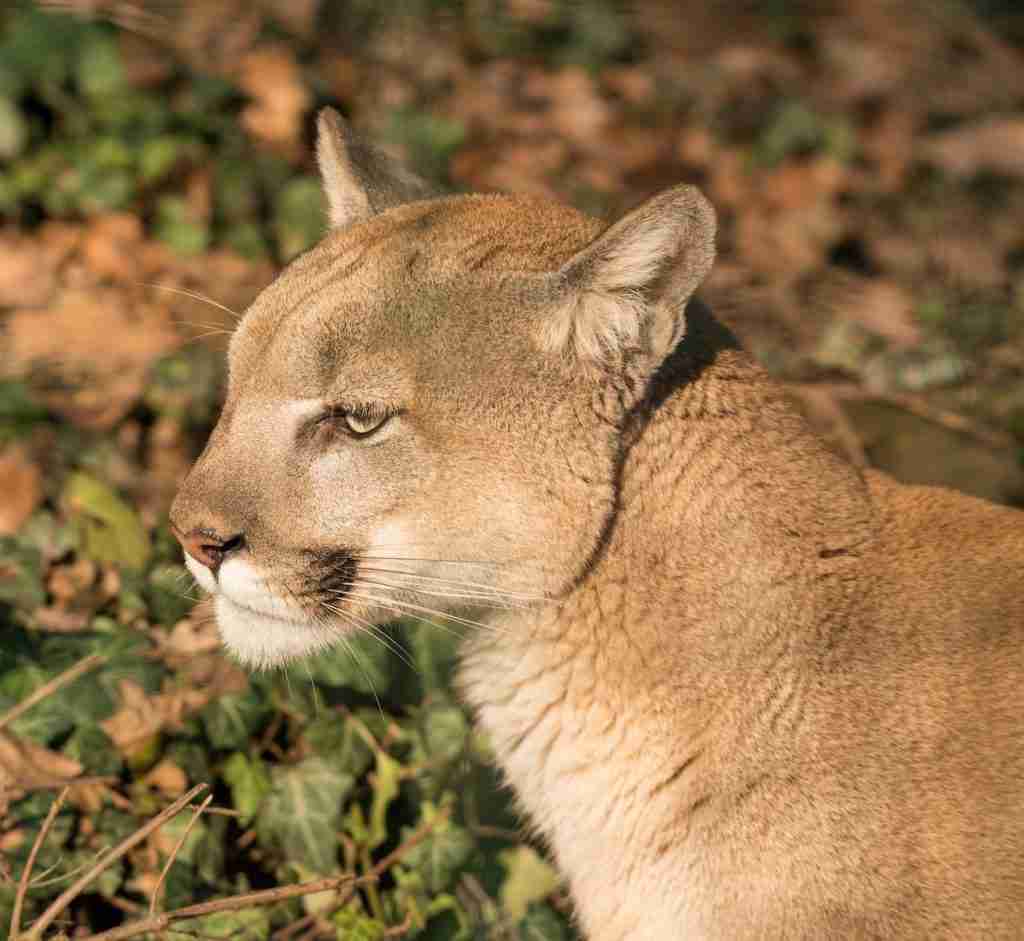
17. Cougars have excellent night vision, which allows them to hunt in low-light conditions.
Cougars have excellent night vision that allows them to hunt in low-light conditions.
They have large eyes with a high concentration of light-sensitive cells, which gives them an advantage when hunting during the night.
18. Cougars are known for their athleticism and agility, and have been known to jump onto the roofs of buildings.
Cougars are known for their athleticism and agility. They are capable of incredible feats of athleticism, such as jumping onto the roofs of buildings.
However, human interactions with cougars can be dangerous, and people are advised to avoid contact with them in the wild.
19. Cougars are also known as pumas, mountain lions, and panthers.
Cougars are also known as pumas, mountain lions, and panthers.
These large cats have various names, depending on the region they are found in. In the western United States, they are often called cougars or mountain lions, while in the eastern United States, they are commonly known as panthers.
The name puma is used throughout much of South America. Despite the different names, these animals are all the same species, Puma concolor.
20. Cougars are the largest wildcat in North America.
Cougars are the largest wildcat in North America. Adult cougars can weigh up to 220 pounds and can be up to 9 feet long, including their tail.
Male cougars are generally larger than females, with males weighing up to 50% more. These large cats have a slender, muscular build that helps them to move quickly and stealthily through their environments.
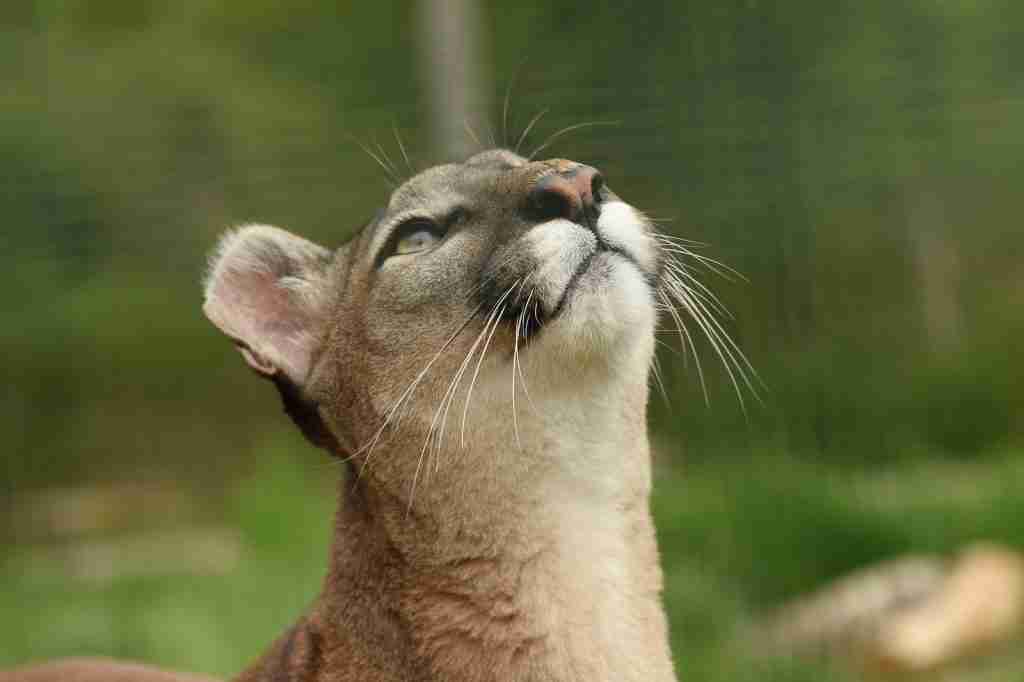
“North America’s majestic giants: Cougars, the largest wildcats.”
21. The scientific name for the cougar is Puma concolor.
The scientific name for the cougar is Puma concolor. The name Puma comes from the Quechua language of South America, where it means “powerful.”
22. Cougars have short fur that is typically brown or tan.
Cougars have short fur that is typically brown or tan. The fur of a cougar is short and sleek, which helps them to move quickly through their environments.
The coloration of their fur can vary slightly depending on their habitat and region, but it is usually a uniform brown or tan color.
23. Cougars can run up to 50 miles per hour for short distances.
Cougars can run up to 50 miles per hour for short distances. Despite their large size, cougars are incredibly fast and agile.
They can sprint at speeds of up to 50 miles per hour, but only for short distances.
24. Cougars have powerful hind legs that allow them to jump up to 18 feet in a single bound.
Cougars have powerful hind legs that allow them to jump up to 18 feet in a single bound. Cougars are also impressive jumpers, with powerful hind legs that allow them to leap up to 18 feet in a single bound. This ability allows them to quickly catch prey or escape danger.
